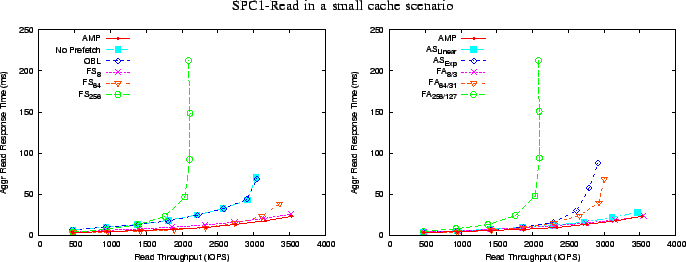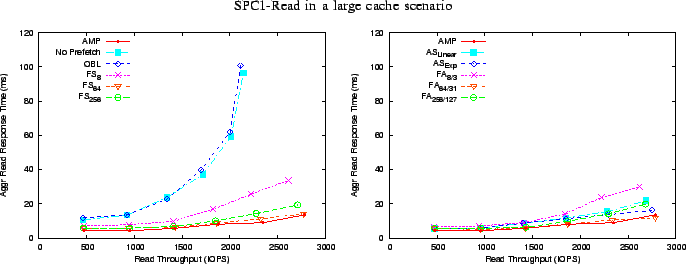 |

 |
 |
We study the impact of the various prefetching algorithms on the performance of the cache when subjected to the read component of the SPC1 benchmark workload. In Figures 10, 11 we show the aggregate response time as a function of the obtained throughput. Lower plots indicate better performance as at the same response time a higher throughput can be achieved. Clearly, AMP is consistently the best performing algorithm in both the small cache and large cache scenarios. No other algorithm can perform well in both scenarios. When the cache is large, the algorithms with a higher prefetch degree seem to do better, while in the small cache scenario, where the cache is precious, the algorithms that are conservative in their prefetch degree tend to perform much better as they incur lesser prefetch wastage. AMP is able to quickly adapt to different workloads and cache sizes, hence performing the best among all the algorithms.